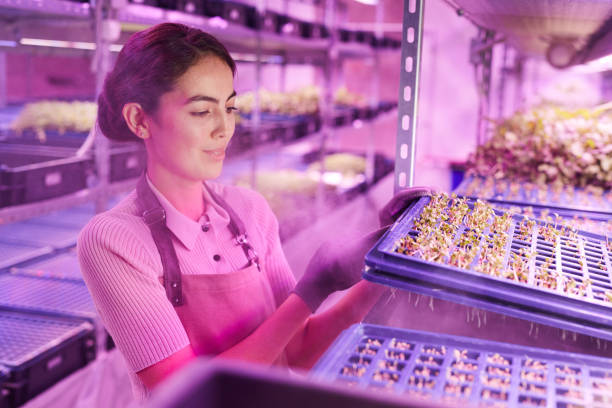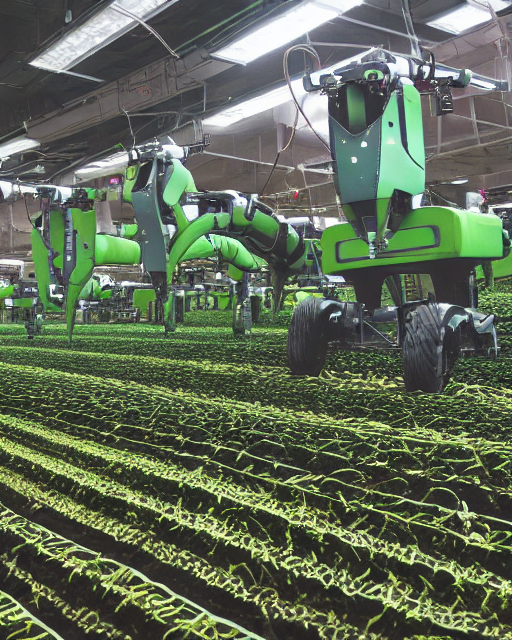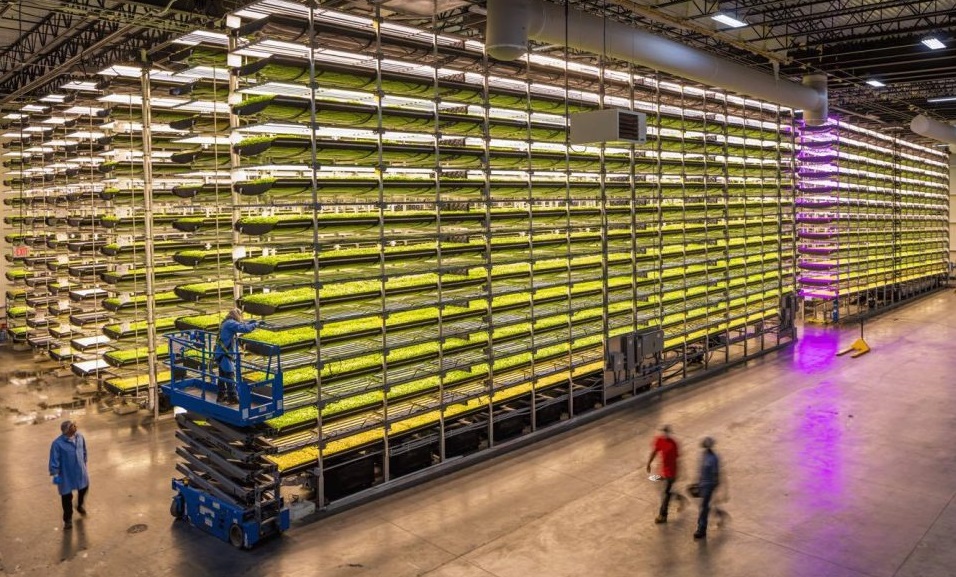The Future of Food Production
How to feed the world without depleting our planet’s reserves?

A UN estimate from their World Population Prospects report predicts that the global population will rise to nearly 10 billion people by 2050 and 10.9 billion in 2100. This is a clear indication that global food production will have to increase significantly and require more efficient techniques.
However, the way food is produced and consumed today is already a contributor to global warming and is responsible for some of the environmental problems we are facing. If we keep doing “business as usual,” what would that mean for our future?
The problems of traditional agriculture
Traditional agriculture shows a tendency of treating nature as the problem rather than the solution. In a sense, traditional agriculture methods subvert natural processes and microorganisms with the aim to increase food production.

The solution – regenerative agriculture
Regenerative agriculture is an umbrella term that encompasses various agricultural practices and approaches to food production that focus on rehabilitating the soil and conserving biodiversity. The notion of it being “regenerative” is related to the goal to regenerate the topsoil that, as we discussed, suffers from conventional methods.
Regenerative and sustainable food production methods
Hydroponic Food Production
Too much water and too much land are wasted in mismanaged and indifferent conventional agricultural practices. Hydroponic farming is a sustainable food production method that optimizes the use of resources by growing plants directly in nutrient-filled water. This is a subset of indoor farming, also referred to as controlled environment agriculture.

Hydroponics sidestep the challenges of farming in soil in several ways:
-Firstly, the plants are grown directly in a water solution that contains all the necessary nutrients, so no soil is needed.

-Water waste is fully minimized, as all water is cycled back into the plants.
-Rather than sunlight, the plants get their light for growth and photosynthesis from LED lights and outside weather conditions don’t prevent them from thriving.
-The water solution is contained in a growth medium, like a coconut husk, that protects the plant from unwanted pests and weeds without any use of synthetics. This increases the healthy crop yield and demands less labor.
-Lastly, hydroponic food production requires 90-99% less land use.

What we end up with is a sustainable food production method that sidesteps external factors such as unpredictable weather or climate change to increase crop yield in a safe and eco-friendly manner. The seedlings and plants in hydroponics systems are often stacked vertically rather than horizontally to optimize the use of space. This is often referred to as indoor vertical farming.

Aeroponics

A popular subtype of or alternative to hydroponics is aeroponics, a similar yet different sustainable food production method. While the guiding principles are the same, the execution is slightly different: aeroponic systems don’t plant seedlings in water, they let the roots dangle in the air. The seed is planted in a special type of foam that receives light from one end, usually the top, and nutrient-rich mist from the other end, usually the bottom.

Unlike hydroponics, where the seedlings are placed inside the water, aeroponics feeds the roots with a nutrient-rich water solution by spraying the plants with the mist of this solution. There are a lot of advantages, on top of the ones we discussed with hydroponics, that make aeroponics a technology that must be way more widespread in the future. Here are some of them:
-The extra oxygen that the roots are exposed to makes them thrive and grow faster.
-Aeroponics is a water-efficient, closed-loop system. Similar to hydroponics, aeroponics optimizes water use by cycling and recycling water through the system. Plus, it requires 95% less water than plants in soil.
-The dangling roots reduce any mechanical resistance of the plant spreading, which means that the plant can grow and expand as it likes without being pressed for room.
With the growing population of urban areas, vertical farming techniques, such as aeroponic systems, could easily be introduced and become a part of the farm-to-table principle without contributing to the carbon footprint caused by food transportation.
New technologies in agriculture
Yes, robots.

As we already mentioned, tractors press and compact the top layers of earth, preventing oxygen from entering it and microbial life from thriving. Advances in robotics could mean small, lightweight, and mobile robots that would work the ground without crushing the soil.
Around the world, governments, organizations, and the private sector are attacking the challenges from multiple angles, including:
- Transforming agriculture with new approaches, like vertical farming, precision agriculture, and genome editing
- Cutting food waste with government policies and new technology
- Producing alternative proteins, including plant-based “meat,” cultured meat, insects, and algae
- Packaging food in innovative ways to reduce damage, prolong freshness, and fight off bacteria
Food That Heals You
The idea that food has medicinal properties is hardly new, but modern life has shown that the opposite is true, too. Food can be deadly, and not just when you eat the moldy leftovers at the back of the fridge. In 2019, a major study found that poor diet is responsible for 1 in 5 deaths worldwide.
“If we continue at the pace of the last 20 or 30 years, we’re going to be eating pretty much the same things but with new bells and whistles, and we’re going to be incredibly sick”.

What are the advantages of growing food in controlled conditions compared to traditional food growing?
Growing food in controlled conditions, such as in greenhouses or indoor vertical farms, offers several advantages compared to traditional food growing methods. Here are some of the key advantages:
- Year-round production: Controlled environment agriculture allows for year-round production of crops regardless of external weather conditions. By controlling temperature, light, humidity, and other environmental factors, farmers can create optimal growing conditions and eliminate the limitations imposed by seasonal variations.
- Increased crop yield: Controlled environments provide an opportunity to maximize crop yields. Farmers can optimize factors like lighting, irrigation, and nutrient delivery to create the ideal growing conditions, resulting in faster growth rates, higher yields, and potentially multiple harvests in a year.
- Water efficiency: Controlled environment agriculture systems can be designed to use water more efficiently than traditional farming methods. Techniques such as hydroponics or aeroponics, which grow plants in nutrient-rich water without soil, can reduce water usage by up to 90% compared to conventional soil-based farming.
- Reduction in chemical pesticide use: Controlled environments offer a greater degree of pest and disease control. The enclosed nature of these systems minimizes the risk of external pest infestations, reducing the need for chemical pesticides. Integrated pest management techniques can be employed, including the use of biological controls and targeted application of pesticides, resulting in reduced chemical usage and potential for pesticide residues in the final produce.
- Controlled nutrient supply: In controlled environments, farmers have precise control over nutrient delivery to the plants. This allows for optimal nutrient uptake, resulting in healthier and more productive crops. Additionally, the use of hydroponics or aquaponics systems can recycle and reuse nutrients, minimizing nutrient waste and environmental pollution.
- Land conservation: Controlled environment agriculture enables food production in urban areas or regions with limited arable land. Vertical farming, for example, makes use of vertical space and can significantly increase food production per unit area. By utilizing unused buildings or converting non-agricultural spaces, controlled environment agriculture can help conserve land resources.
- Reduced transportation and logistics: Locating controlled environment farms near urban centers or within urban areas can reduce the distance food needs to travel from farm to consumer. This decreases the carbon footprint associated with transportation, as well as the time and energy required for logistics.
- Consistency and quality: Controlled environments offer consistent and predictable growing conditions, resulting in more uniform crop quality. Factors such as taste, texture, appearance, and nutritional content can be optimized and maintained consistently, meeting specific market demands.
It is important to note that while controlled environment agriculture provides numerous advantages, it also has some limitations, such as high setup costs, energy requirements, and technical expertise needed to operate these systems effectively. However, ongoing advancements in technology and increasing demand for sustainable food production are driving innovation in this field.
Consumers, businesses, and investors are starting to think more about nutrition and sustainability.
Cultured Meat Is Coming Soon
Cultured meat promises to change the way we eat and help solve some of the big problems of a crowded planet. When will it be on our plate and how will this technology impact the world …???


